Don't wanna be here? Send us removal request.
Photo
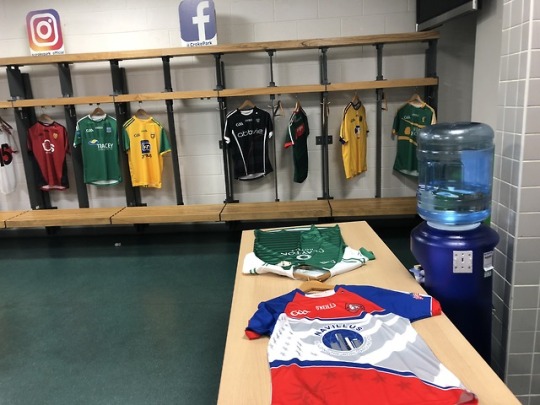
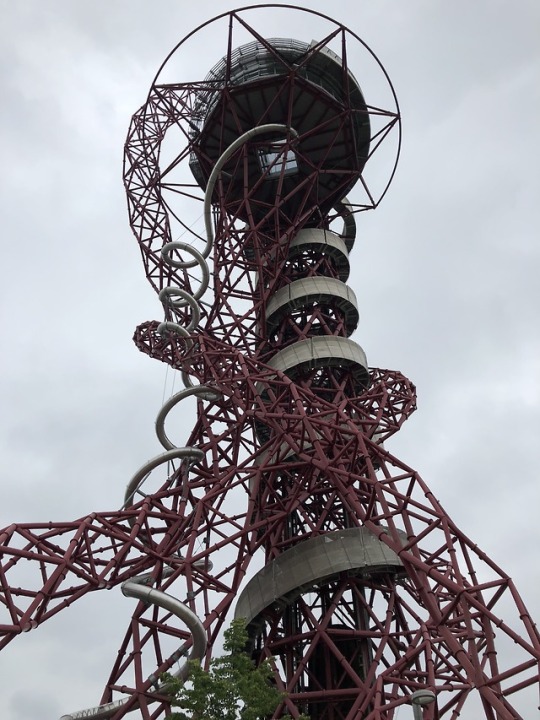
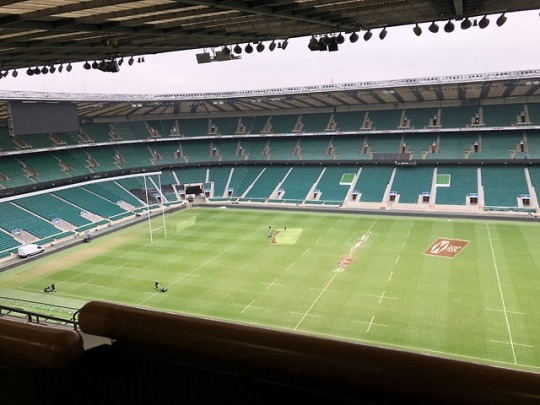

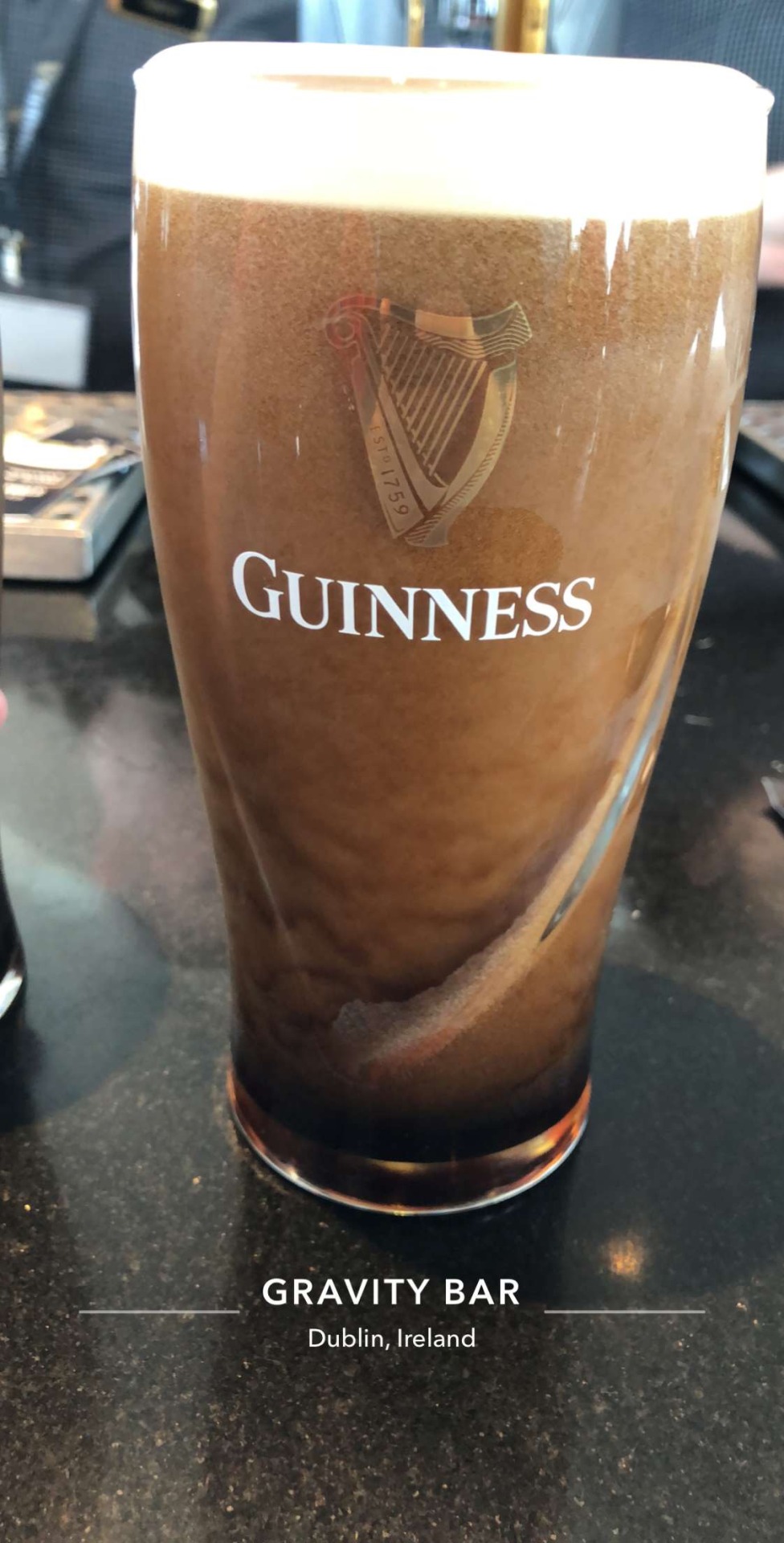
Looking back on this trip, I am extremely glad I got to experience everything I did. I have developed a much larger respect for sports like soccer, and I have broadened my views on both playing and watching many sports. The biggest change for me came in my views about soccer. I found it very difficult to enjoy watching soccer when flopping and faking injuries was basically the norm, especially since I grew up playing hockey where the only time you would go down is when you were actually hurt. I saw it as being wimpy and preferred to watch sports where people would take contact and think nothing of it. My view has changed after being exposed to the fan base behind the sport, as well as getting to watch a match in person.
Getting to experience all of the different tours and see the differences in how each stadium was set up with locker rooms and press boxes, as well as seeing some of the inner workings of the stadium was amazing. I think the biggest thing that stood out to me from the locker room standpoint was how small fulham’s dressing room was in comparison to the rest of the stadiums we visited. I found it extremely interesting that professional players were able to fit comfortably in a locker room that was reminded me of a closet. It made me wonder if the players were okay with the situation they were in, or if the stadium just didn’t have the money to renovate and make the room larger because they were not in the EPL for a few years.
I included a few more photos from the trip: the locker room of Croke Park, the slide in Olympic Park, Twickenham Stadium, and a fish on a bicycle (why not?).
Also, just a word of advice…. the Guinness tour is over-hyped. Unless you are willing to wait in long lines to experience any of the hands-on activities, save your 20 euros and get a Guinness at a local pub instead!
0 notes
Photo
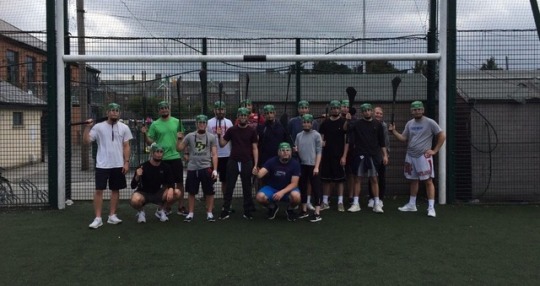
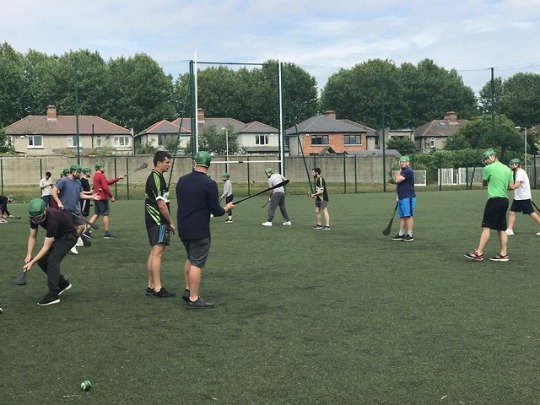
Today we got to experience playing the Gaelic games of Hurling, Gaelic football, and Handball. It was very fun to get to experience the main games that the Irish have focused on in order to distinguish themselves from the UK. Ireland became independent from the UK in 1937, and sports like these were practiced in order for the Irish to create their own identity through sport and therefore distance themselves from the British. The Gaelic Athletic Association was formed to replace the British sports of football and cricket with Gaelic football and Hurling, respectively. The Irish sports are both focused around being much more physical and brutal, which made the British out to be “soft” or “weak” because cricket and football are not contact sports.
Hurling and Gaelic football were extremely difficult to learn how to play, the games incorporated elements of skill that were incomparable to any of the skills I learned from playing sports. Having to pick the ball up without using my hands, as well as only being able to bit the ball instead of throwing it to make a pass were the hardest concepts for me to get the hang of. After being able to watch a hurling match live, I definitely was not expecting the game to be so difficult to pick up. We had trouble even getting the ball off the ground, so the game was played more like field hockey than actual hurling. One of the more interesting things we were told was that if you weren’t learning how to play hurling by the age of 5, it would be near impossible to get extremely good at it. This is a concept that is generally the same for most professional sports in the US, but the concept of having to be exposed to it so early in life is not preached as heavily for us. Gaelic football was also extremely difficult to pick up, mostly because of the way you had to pick the ball up off of the ground. In order to get the ball to your hands, you had to basically chip it off the ground to your hands and then proceed to run with the ball, alternating between dribbling it off of the ground and your foot as you ran. Since it was played with a version of a soccer ball, hitting it with your hand instead of throwing it to make a pass was very hard to do consistently. Once we played for a little while, everyone started to understand the game a little better, and it became easier to play. in comparison to hurling, the quality of the game for us was much better, and since many people had backgrounds in soccer, much more competitive. Overall, the experience was one that I had a great time with, and it made me much more intrigued to get better at both sports.
0 notes
Photo

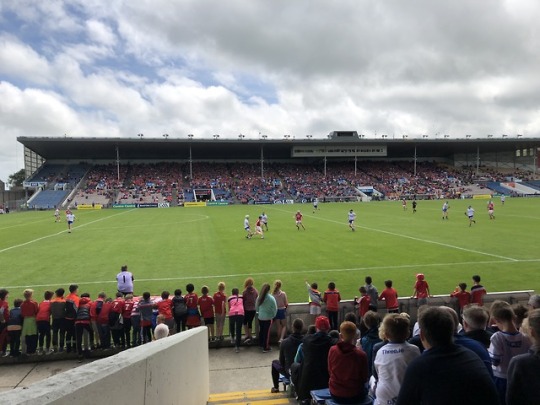
Today we got to go watch a hurling match. Hurling is a cross between lacrosse, field hockey, and rugby. It is an extremely physical game, we saw around 10 people go down with injuries throughout the course of the game, but only 2 of them were unable to continue playing. The players were extremely tough, something that seems to be a pride of the Irish people. There were actually a few young Irish kids who were talking smack to a couple other kids on our trip about how American football was "wimpy" compared to hurling (a few other choice words were used that I won't use here). I thoroughly enjoyed myself at the game though, the atmosphere was amazing and I really enjoyed the sport as a whole.
It was amazing to be able to witness and learn about a game that I actually knew nothing about. Since people generally learn most sports (or at least about the sport) at a very young age, most people don't usually remember specifically learning that sport. Being able to actually witness a completely new sport and learn all the specifics within the game at an older age was a very interesting experience for me, and I am very glad I was able to experience it.
I did not look anything up about the rules of the game, but I wanted to try and give my take on the rules from only watching the game, so here goes. There are 2 teams of 15 players, including one goalie. Positionally, it seemed to have elements of football, there seemed to be 3 defenders and 3 forward players, with the rest playing more midfielder roles. They aren't able to pick the ball up off the ground with their hand, they must use the paddle to scoop the ball up to get it to their hand. Players could then advance the ball by running with it in their hand, or passing it using the paddles that they play with. When a player was running with the ball in their hand, they would have to pass it to themselves after a certain amount of steps by either bouncing it on their hand or the paddle in order to keep advancing the ball. If the defenders had the ball they could carry it without having to pass to themselves until they got to the middle of the field. Scoring was done one of 2 ways. Players could hit the ball through uprights (basically field goals in American football) for 1 point. Players could also score 3 points if they were able to score into the net that the goalie protected.
0 notes
Photo

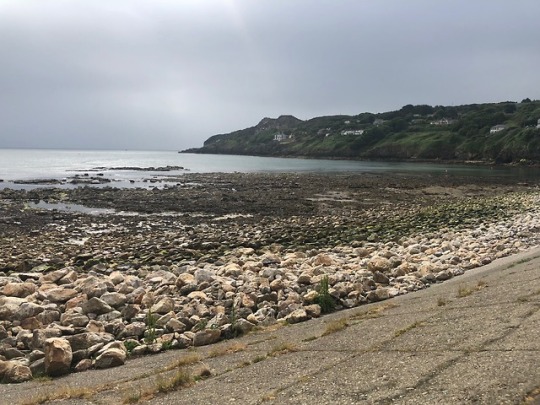

Today, we took a hike in Howth. It was definitely one of the most beautiful coastlines I have seen. The hike wasn't very difficult, but it was very enjoyable.
0 notes
Photo
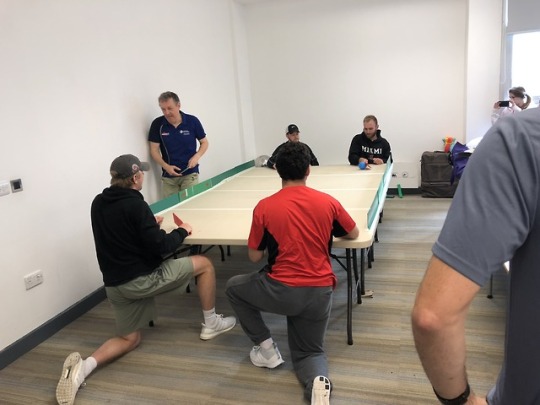
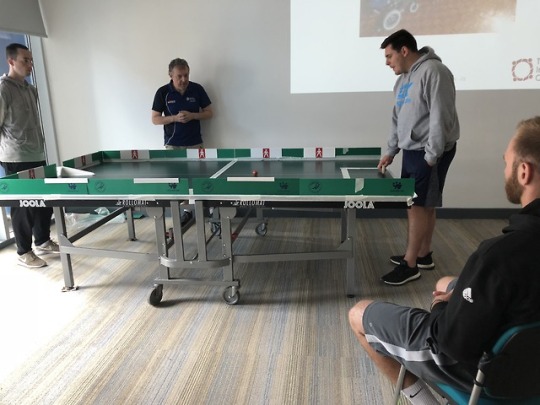
Getting to travel to Worcester and experience some of the inclusive sport games that they work with was one of the most eye-opening experiences throughout this trip. We got to learn about inclusive versions of table tennis and cricket that our lecturer created in order to allow disabled people to participate in sports that their disabilities normally would not allow them to. The version of table tennis that he created was called polybat, and was a game where people try to push a whiffle ball past the person on the opposite side of the table. The whiffle ball can’t bounce on the table, but there are bumpers along the sides to make sure the ball can only exit on the ends by the players. This is a game that is helpful for people who have mobility issues, because it allows them to be able to compete or just have fun in a game that anyone can play. The adaptive cricket is also played on a table with barriers, with only one end open. The bowler (the player who would pitch the ball in normal cricket) rolls the ball down a ramp to the batter, who has miniature cricket bat. The batter then hits the ball, with outs being decided by plastic players that are placed along the wall. If the ball hits the red part of the player, it is an out. Teams can have one player that they can move along the barrier to try and get outs. We were able to try out playing each of these games, and I could see how entertaining it would be for disabled people to get to experience these games in ways that allowed them to have fun and succeed.
We also got to experience wheelchair basketball and blind soccer, which were very humbling experiences. Wheelchair basketball was a lot of fun, we played an inclusive version of the game where some people were in wheelchairs and others were playing on their feet on the sides of the court. I played in the wheelchair the whole time, and it was a lot more difficult and tiring than I had thought it would have been. I gained a lot of respect for the people who are able to play with disabilities because of the skill it takes to both dribble and work the chair at the same time. Blind soccer was one of the most difficult things I have done, it was amazing to see how reliant I was on sight and how difficult things are without the use of my eyes. I have a lot of respect for those athletes that are able to compete in sports like soccer without the use of sight, it would take me a long time to become even remotely decent at any sport without my eyesight. Since getting to be a part of adaptive sport, I am keen on learning more about it and eventually helping people play sport no matter if they have a disability or not.
0 notes
Photo

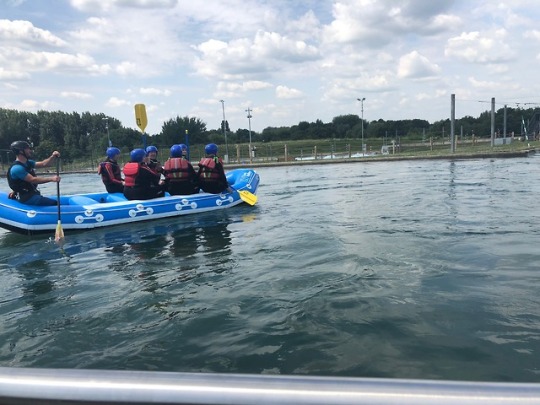
One of my favorite activities on the trip so far, white water rafting at the Lee Valley White Water Center. This was the course for white water slalom kayaking in the 2012 London Olympics. I only got thrown out of the raft twice, not really an impressive feat but one all the same.
0 notes
Photo
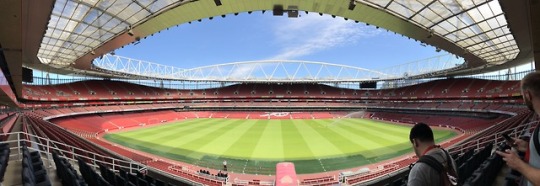
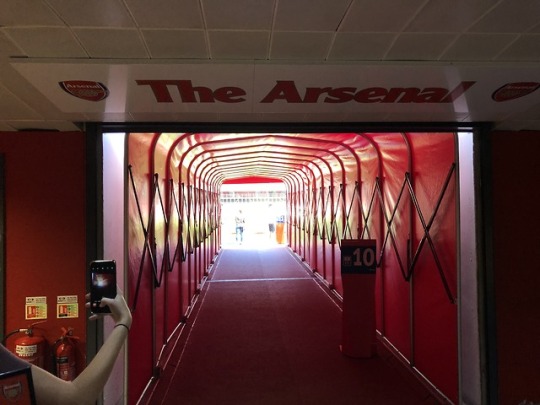
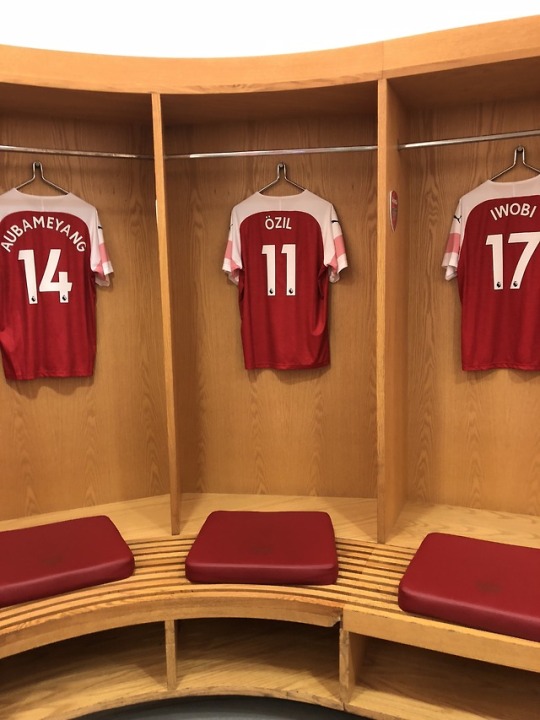
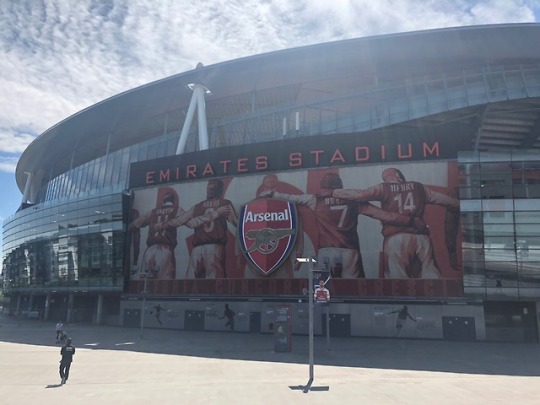
Our tour of Arsenal’s stadium, Emirates, showed the extent of corporatization that some of the teams in the EPL have reached. Our tour was self-guided, with a headset and a tablet as our tour guide. The tablets had pre-recorded audio and videos on them explaining the tour that we went on, but it lacked a lot of personality that an actual tour guide could provide. The videos during the tour felt like they dominated the tour, and didn’t really allow one to look up and experience the stadium through their own eyes nearly enough. The biggest qualm I had was just about how automated it felt, the experience was much harder for me to take in and enjoy than it would have been with an actual person talking to us. That being said, there were elements of the tour that did make it appealing. In terms of the appeal to the club, Emirates can house a lot more tours without having to worry about costs like tour guides, which means more profits can be made off of the tours. For me, I did enjoy that I was able to experience the tour at my own pace and pick certain parts to focus on more or less.
That being said, I still am not completely sure how I feel about the automated tour approach to a stadium. The tour definitely showed how corporatized Arsenal has become in comparison to the more traditional clubs like Fulham, but it appears to be working for Arsenal. It was interesting to see how different the three stadiums we went to were though, it seemed like the three clubs represented the direction that teams have started going in recent years in the EPL. The clubs that are generally more traditional have not been doing as well recently because they lack money or choose not to spend enough on players. West Ham’s stadium at Olympic Park seemed to be in the transition phase of a club going from traditional to corporatized, but the club’s success has been limited since the start of their transition. Arsenal, was definitely the most successful of the three clubs that we saw, but that is largely due to their extremely high spending on players each year. The main difference between the successes of the facilities of Arsenal in comparison to that of West Ham’s is that Arsenal was able to create their own stadium to allow for aspects of tradition to be woven in, whereas West Ham has had to adapt their traditions to fit a stadium that is not ideal to watch soccer in.
0 notes
Photo
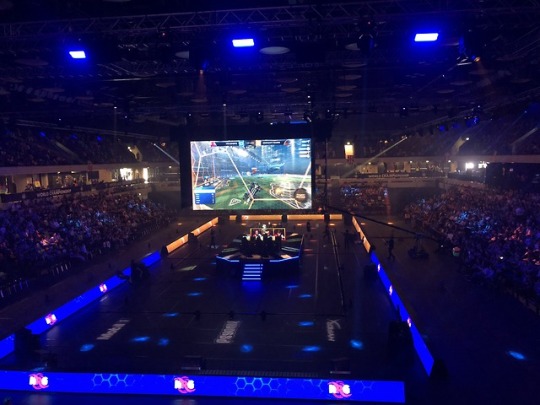
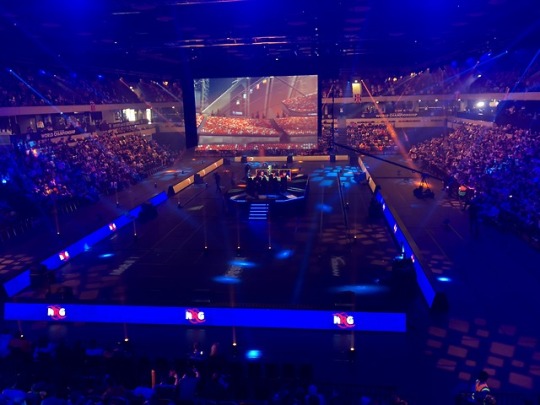
To end my free weekend, I went to watch the final day of the Rocket League World Championship tournament. Rocket League is a video game that has developed a large following in the eSports community since it was released in 2015 as a sequel to a game called Supersonic Acrobatic Rocket-Powered Battle-Cars that was released in 2008. The basic concept of the game is to hit a soccer ball into a net with a car that you control. The games last 5 minutes, and whatever team has the most goals at the end of the game wins. You can play the game solo, or in teams of 2 or 3. In these professional Rocket League eSport tournaments, teams of 3 compete. This tournament specifically was the Word Championship, so the top 4 teams from Europe, North America, and Oceania after their regular season games all got to compete to be the best team in the world. I got to see three different matches, and saw teams from all three regions compete. This event was held in Olympic Park at the Copper Box Arena, which was the building where handball and pentathlon events were held in the 2012 Olympic Games. It holds around 7,000 people, but throughout the time I was there it had about 4,000-5,000 fans. I didn’t get to stay for the championship game, but from what I saw on the stream of the finals the stadium was near capacity.
The diversity apparent at this event was very interesting, I got to see people from all over the world supporting their favorite teams or countries. The teams had players from all different countries within their specific regions; North America had people from the US and Canada, Europe had players from Finland, Sweden, Germany, and Spain (among others). The biggest thing I noticed at the event was how big the “hometown hero” aspect was to the fans. People generally would root for teams that were in their specific region, but the biggest cheers that were usually heard were either for local players or from people who were from the same area as a certain player. While there were many different races and nationalities represented at the event, everyone got along and were generally very friendly towards one another. The whole event seemed very welcoming to all different people, no matter how much you knew about the game. Considering that gamers generally can be very adverse to new gamers or people who don’t know a lot about a game, it was nice to see a very inclusive and friendly atmosphere.
0 notes
Photo
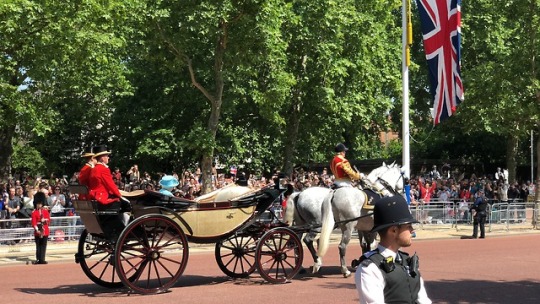
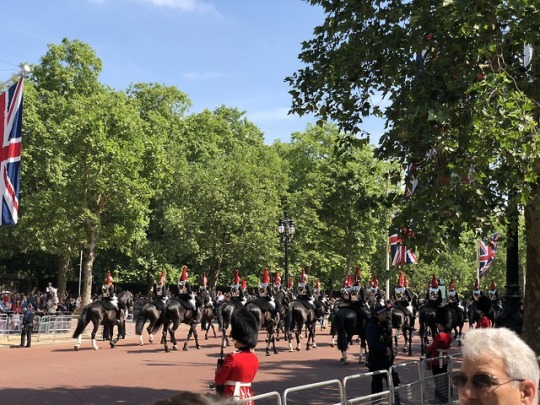

The few of us that did not travel anywhere outside of London during our free weekend went to see the Queen’s Birthday parade. The parade is held on the second Saturday of June every year, although the Queen’s actual birthday is on April 21. The parade was amazing to watch, we got to see the Queen, Philip, Camilla, William and Kate, and Harry and Meghan, among other people from the royal family. Getting to see all of the soldiers march down the road with the bands was very amazing. Although it was a bit of a touristy event, it was very cool to see a lot of British people wearing their country’s colors and waving flags around. Everyone was extremely friendly and excited, even the policemen were smiling and celebrating to a certain extent. Everyone from England seemed to want to celebrate their national pride, but they included all of the tourists in their celebrations, which was very cool to be a part of.
0 notes
Photo
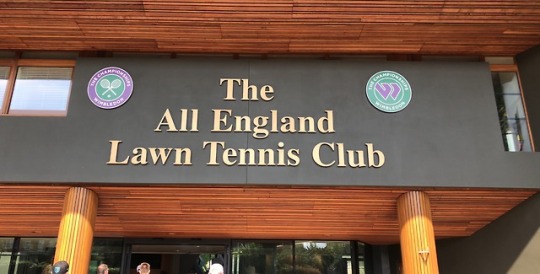
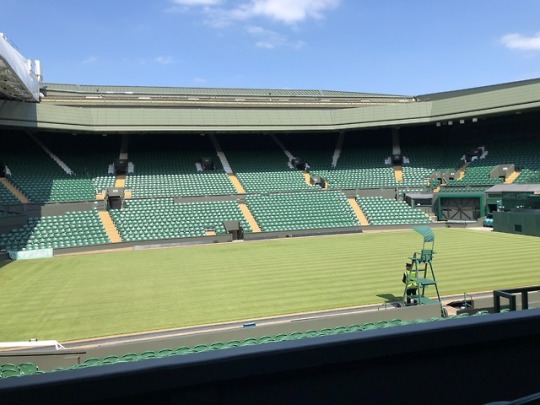
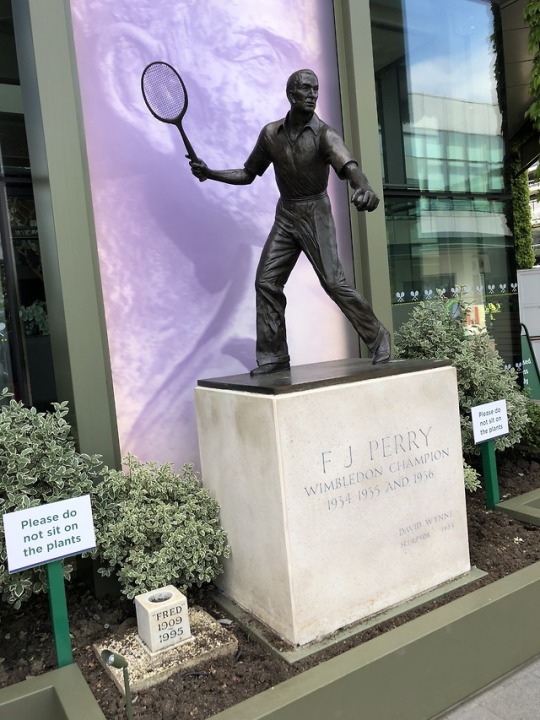
To end the week before our free weekend, we got to go on a tour of Wimbledon. It was definitely one of my favorite places we have visited so far, mostly because I have more of a background in tennis than I do in soccer. Over the course of the tour, we were able to see around 5 of the courts up close, including the court where the longest match was played. The 2010 match was between John Isner and Nicholas Mahut, and was played over the course of 3 days with the players competing for a total of 11 hours. One of the reasons that this match took so long was because it was played on court 18, which is one that is not used for generally high profile matches. This means that there are no spotlights to light up the court like there are for the centre court, so the match had to be postponed 2 days in a row because there was not enough light to continue play. Isner eventually went on to win on the third day of play, and it has been said that there will probably not be another match that great ever again. We were also able to see the centre court, where all the big televised matches are played.
Had the longest match been played on the centre court, it would have changed the dynamic greatly because they would have been able to play much linger into the night. It probably would not have been good for the players because they were extremely fatigued after playing over the course of three days, but if they had played for longer times over one or two days serious consequences could have arisen. One of the more interesting things we learned from the tour guide was about how few English players had actually won the tournament since the tournament was opened to non-British players. The tournament was strictly British until 1906 for men and 1905 for women, but a British player did not win the tournament after then until 1934 when Fred Perry won. He is the only British man to win a Wimbledon championship besides Andy Murray, who won in 2013. The statue pictured of Perry is through the front gates of the club, and is there because his accomplishments meant so much to the British people and their identity. He was the first to win the tournament against the best players from all over the world, which made him a hero in the eyes of the British. Learning about the history behind Perry and his importance to British tennis was very interesting, it gave a much different view on the importance of tennis to the British.
0 notes
Photo
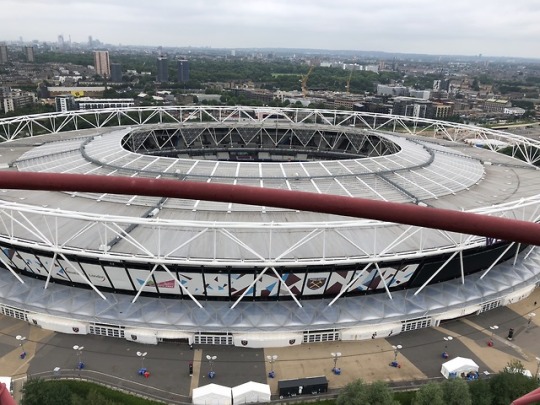
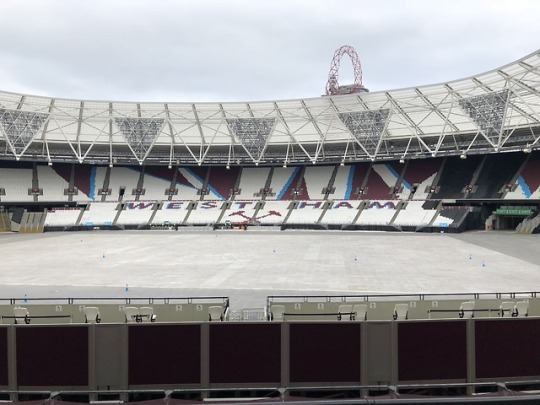
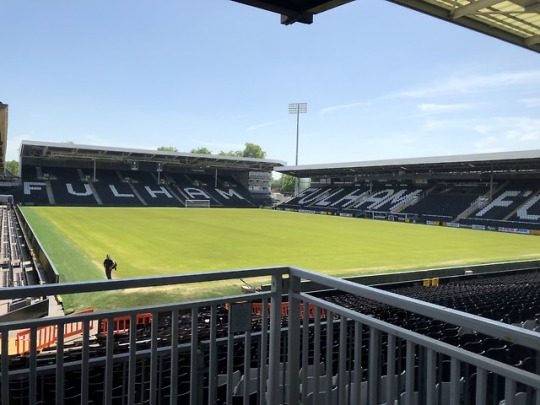
We toured two very different soccer stadiums this week, West Ham and Fulham. West Ham’s stadium was the main stadium designed for the 2012 London Olympics where events such as track and field were held. The stadium was designed as a multi-purpose venue, meaning that it was designed to host all sorts of different sporting events like football and track and field, as well as other events like concerts. This multi-use aspect of the stadium caused many problems in the design of the stadium in terms of its use after the games. West Ham’s football club is currently the main user of this stadium, but other large events like the Athletics World Cup and large concerts like Jay-Z and Beyoncé are also held there. Fulham’s stadium was very different in comparison, not only in size (West Ham has around 40,000 more seats) but also in the style. West Ham was very new and fancy, with lots of gold plating on things and a very modern feel to it. Fulham, on the other hand, had a much more traditional feel to it. While walking around the gates to the club, you could see that they kept the original turnstiles, and even had seats in some areas that were from the early 1900s. There was a much more intimate feel at Fulham, the seats felt like they were practically on the pitch.
It was interesting to see how the designs of the two stadiums portrayed the individual identities of each club, as well as the images they are trying to adapt to. West Ham winning the bid for London Stadium basically put them on the fast track towards a more business-oriented stadium, something that went away from the more traditional feel of stadiums like Fulham. Both of these clubs have seen some push back from fans about their stadiums, but West Ham’s struggles have been much more prominent. The West Ham supporters have had a lot of issues with their new stadium, with the biggest complaints dealing with the distance from the pitch that the use of retractable seating causes, as well as inadequate restrooms and food accessibility for people in the higher seating levels. This has been such an issue for some new fans that they have even stopped coming to watch West Ham games at the stadium all together. Fulham, on the other hand, felt to me like it was a little too far behind on their own stadium’s modernization. This is partially because Fulham was not a part of the English Premier League (EPL)- they couldn't receive any of the TV revenues from the EPL because of this so they were not making much money- for the past few seasons because they were not good enough, but they made the jump back up to the EPL this past season so things are looking up for the club. They are planning on adding around 15,000 seats to their current stadium, which will help with the lack of seating they have, as well as give it a newer feel while still retaining the traditional aspects of the current stadium.
4 notes
·
View notes
Photo
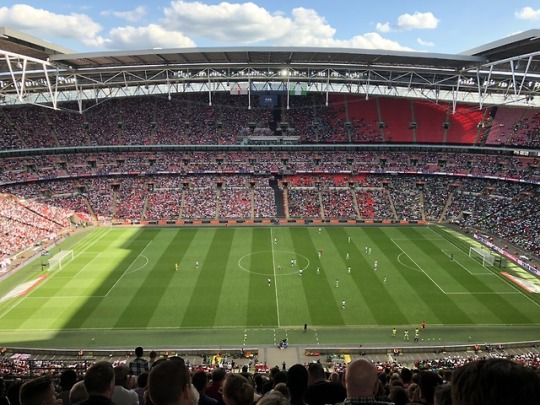
Since arriving at London-Heathrow Airport on Saturday morning, things have been moving pretty quickly and it has taken a few days to get settled in. My future posts will be less lengthy and done more frequently from now on.
After arriving in London and getting to the living accommodation, our group immediately traveled to Wembley Stadium to watch a World Cup friendly match between England and Nigeria. England won the match 2-1, but I was slightly disappointed by the lack of nationalism displayed by the England fans. I was expecting a much louder, more electric feel in the stadium, but it generally was pretty quiet unless goals were scored. Chants and cheering were not as common as I expected, but I believe that it was due mainly to the fact that it was only a friendly match. While England fans tended to be slightly docile, I saw a large amount of nationalism displayed by Nigerian fans. They probably made up about 1/4 of the fan base in the stadium, but the amount of noise they made showed their support for their team and country. There were a few Nigerian fans who were talking trash towards me and the group I entered with, trying to get us riled up because they assumed we were England fans. I told them that we were Americans, which was pretty comical because it shut them down completely.
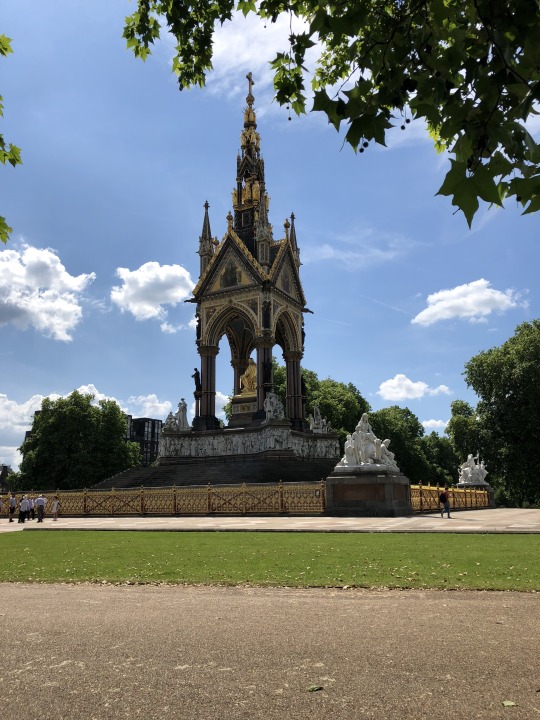
Sunday was a more relaxed day, we went to Hyde park and learned how to play cricket. It was a great time, and I was very surprised with how accommodating the people around us were to sports in the park in general. Usually in the US, parks have a sort of set aside area where people go to play sports in order to not interfere with others trying to relax. We were surrounded by people, but the errant hits that occasionally almost hit people didn’t seem to bother anyone. It showed a difference in culture and how supportive of sports and activity people are. We also got to see some very interesting monuments like the Albert Memorial (pictured), and the Cavalry memorial.
4 notes
·
View notes